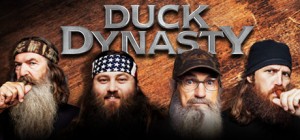As the name suggests, Hawk Mountain is a place where the birds rule. The now-famous destination is visited by thousands of people who come to experience nature. From the visitor center at the base to the rocky outlook at the peak, Hawk Mountain is a living memorial for the awe-inspiring eagle populations. From the moment you step foot into the Hawk Mountain Visitor Center, you know that you are there for the birds. Pictures, statues, stuffed animals, and books fill every free inch of the facility. The focus on these winged creatures is overwhelmingly informative. Educational pieces are carefully placed throughout, allowing the visitors to learn as they go. It seems almost impossible to leave Hawk Mountain without a better understanding of eagles and their migratory tendencies. A closer look, however, reveals the significance of the center’s focus. While strolling around the building, one begins to understand the “story of place” that belongs to the picturesque Pennsylvanian hill. From an environmentalist’s perspective, the history of Hawk Mountain can be seen as a place that has transformed from death and destruction into a place where the birds are celebrated and protected. The birds, which were once hunted for pleasure, are now a symbol of nature that is constantly celebrated for its profound beauty. While much of the Hawk Mountain experience is upheld by human development, the meaning of Hawk Mountain as a whole serves not only as an educational advocate for nature, but also as a memorial for uninterrupted beauty which nature provides.
Today, Hawk Mountain is a place to admire the annual migration of healthy eagle populations, however, the strength of these species has never been assured. Decades ago, the extinction of the Bald Eagle seemed imminent. In the early and mid 1990s, widespread hunting and chemical dispersion put the fate of countless eagle populations in jeopardy. During these times of struggle, Hawk Mountain became a place where scientists would develop factual evidence of the human induced threats that the birds were facing. In her book Silent Spring, famous environmentalist Rachel Carson noted that the declining counts of eagles on Hawk Mountain was a direct result of DDT use across the country. Her work helped raise awareness for the environmental harms of DDT and the threats that they posed to various bird species. Since then, annual bird counts taken from the top of Hawk Mountain have served as critical tools in monitoring the strength of the bird populations.
Beyond the scientific significance that is so central to Hawk Mountain’s story, is a place where scientists, tourists, and nature lovers alike can come together to experience the great outdoors. During peak migration season, the mountaintop can often resemble a busy Manhattan corner, with bundled up birdwatchers perched atop each and every rock. Despite the crowds, the hikers and birdwatchers remain mostly silent as the visitors admire the views with their eyes instead of their words. The occasional “bird over 5,” or “I’ve got two way up high,” makes up the majority of the conversation. As an Eagle appears on the horizon, slowly gliding towards the mountain, a sense of excitement becomes evident in the crowd. There is a shear beauty to the birds that everyone can admire. They glide back and forth upon the wind currents, twist and turning with the grace of a falling leaf. The spectators stare up in awe, as if admiring a shooting star or the famous Blue Angels in a choreographed air show.
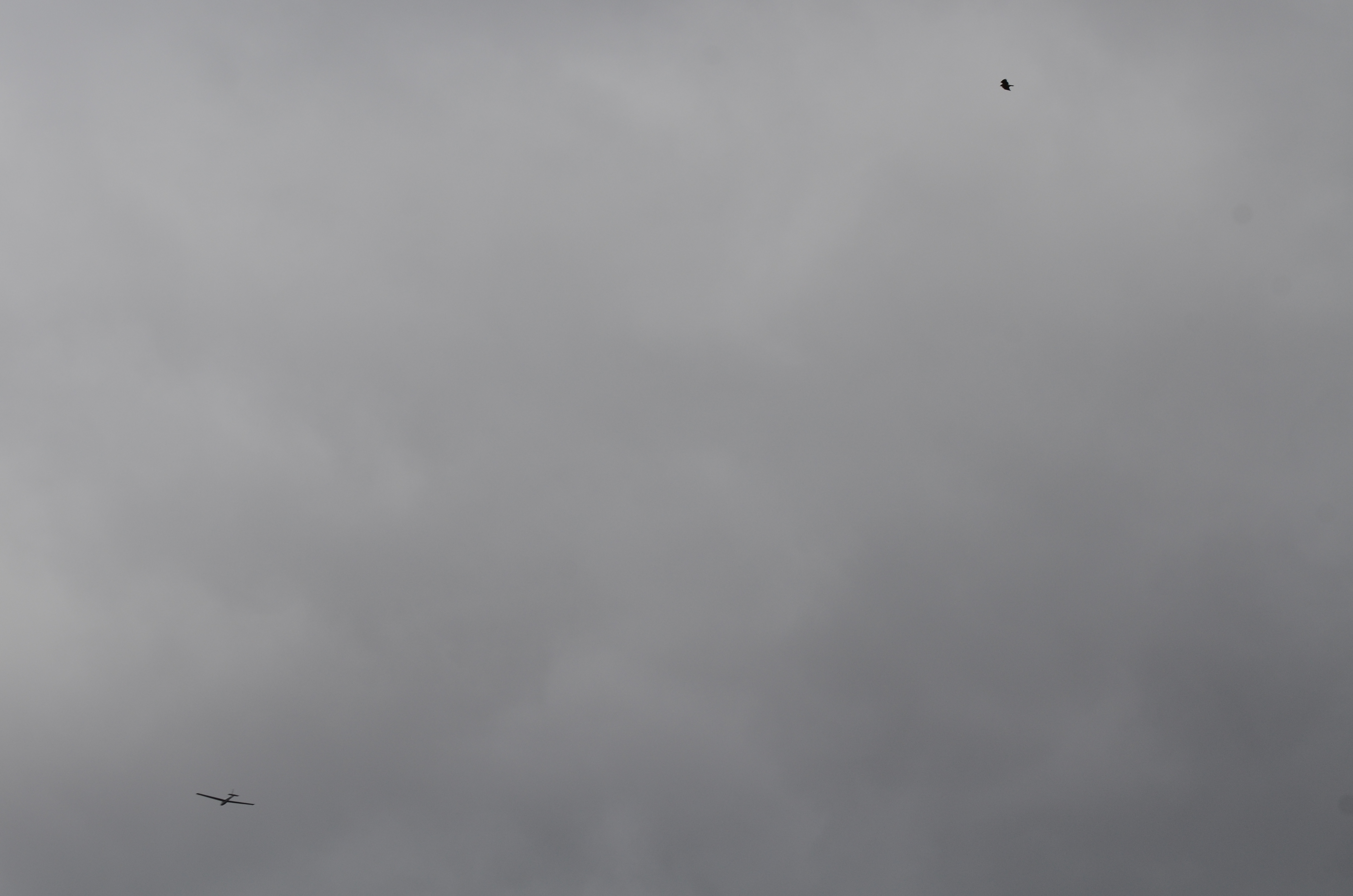
While this is a pretty bad photo, I think it is significant to the Hawk Mountain experience. I was riveted by the gliders and the similarities that their flight patterns had with the eagles. It is a great example of man trying to be like a bird.
The birds come and go. So do the people. Filing up and down the mountain by the thousands, the people who visit Hawk Mountain leave with very little. The nature photographer leaves with some images, the family with a stuffed animal and the bird watcher with a memory. What all these visitors share, however, is a respect for the natural. Often considered as a “Crossroads of Naturalists,” Hawk Mountain offers a unique perspective of environmental conservation. On the façade, Hawk Mountain is an undeniable tourist destination. Parking lots sprawl through the woods for acres, dozens of staff roam about, and well constructed trails lead even the most fragile city-dweller to the top of the mountain. Despite all this, Hawk Mountain is a place where nature is honored. The people who visit are there to experience a phenomenon that is entirely non-human. The migration of the eagles is something that we hope to have no control over. Instead, we look on in envy as the birds soar past the mountain. At Hawk Mountain, we are celebrating the intrinsic value that nature provides.
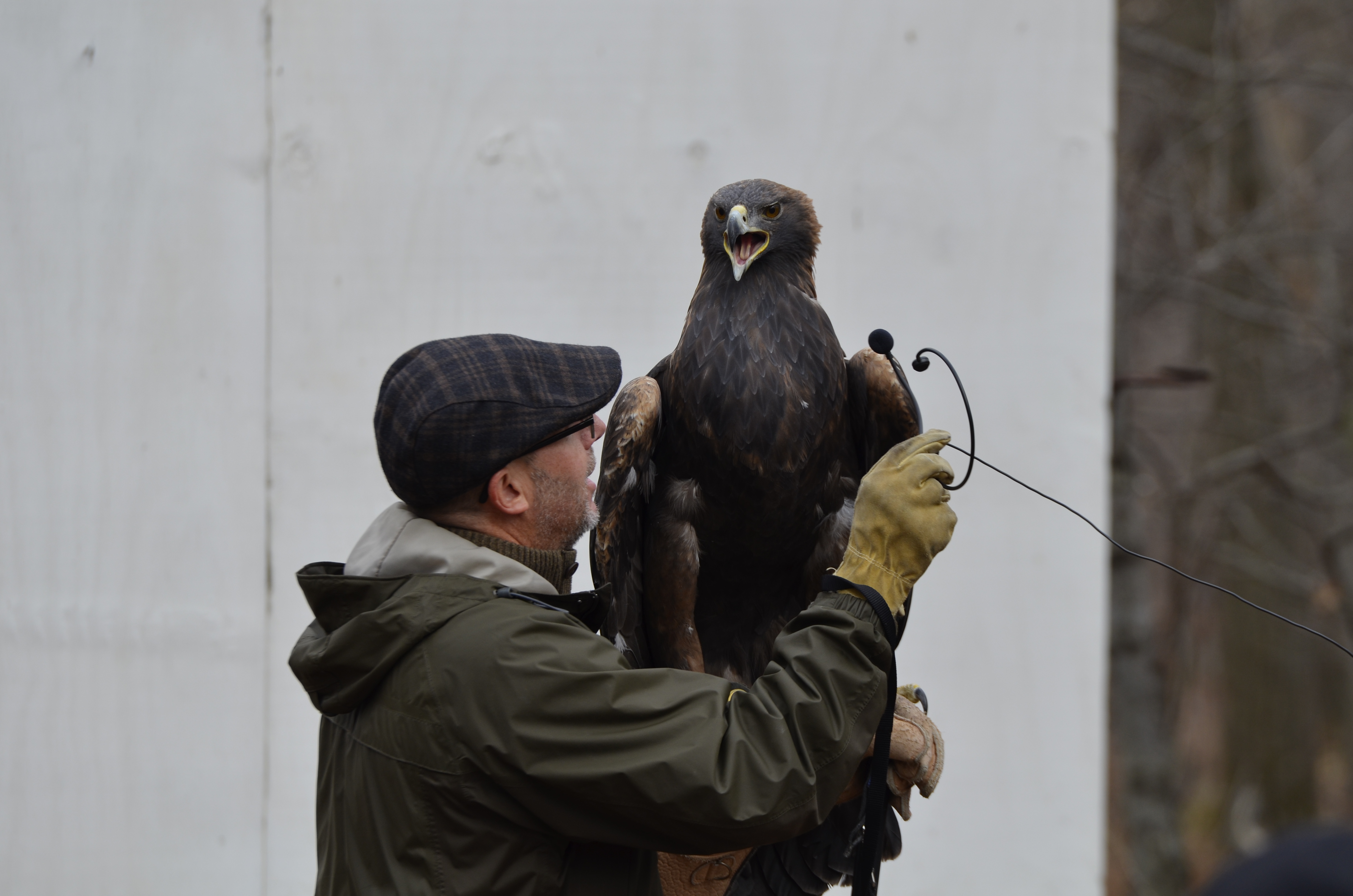 A short trip down the road and one can leave behind the crisp mountain air for welcoming arms of consumer America. Occupying 250,000 sq. ft. of floor space, the colossal Cabela’s Retail Store can be defined as many things. Whether it’s a redneck vacation destination, the ultimate zombie-apocalypse hideout or your one-stop hunting shop, the “World’s Foremost Outfitter” offers just about anything that the avid outdoorsman could ever squeeze onto his holiday wish list. Gliding through the rows of jacked-up pickup trucks towards the immense log structure, one can’t help but curiously question the unique sense of nature that the store is attempting to provide. Step through the sliding doors and the Cabela’s greeter immediately welcomes you. “Welcome folks, only 40 days until Christmas… nothing says I love you like a brand new shotgun from Cabela’s!” Despite being momentarily thrown off by this introduction, my concentration immediately shifts to the stores cherished centerpiece. Beyond the horizon of trees (camouflaged hunting clothes) rises a towering mountain covered in… dead animals.
A short trip down the road and one can leave behind the crisp mountain air for welcoming arms of consumer America. Occupying 250,000 sq. ft. of floor space, the colossal Cabela’s Retail Store can be defined as many things. Whether it’s a redneck vacation destination, the ultimate zombie-apocalypse hideout or your one-stop hunting shop, the “World’s Foremost Outfitter” offers just about anything that the avid outdoorsman could ever squeeze onto his holiday wish list. Gliding through the rows of jacked-up pickup trucks towards the immense log structure, one can’t help but curiously question the unique sense of nature that the store is attempting to provide. Step through the sliding doors and the Cabela’s greeter immediately welcomes you. “Welcome folks, only 40 days until Christmas… nothing says I love you like a brand new shotgun from Cabela’s!” Despite being momentarily thrown off by this introduction, my concentration immediately shifts to the stores cherished centerpiece. Beyond the horizon of trees (camouflaged hunting clothes) rises a towering mountain covered in… dead animals.
A closer look reveals an interesting dichotomy between man and nature. Life-like taxidermy animals are perched all around the display. A massive black bear is propped in a killing position next to a small sign that says, “taken illegally” with a disclaimer describing the shame in illegal poaching. Does it really matter how the animal was “taken?” It seems trivial for Cabela’s to make this disclaimer when many dead animals fill their store. Nonetheless, almost every shopper stops to take a look at the animals. Many are hunters, carefully examining the prized trophies. Others simply stare. I too can’t help but feel strongly about the exhibit. The animals are beautiful and I can’t help but admire the balance between power and grace that they represent. Despite my awe, the exhibit still feels wrong to me. Maybe it’s the terminology; “taken,” “his kill,” “harvested,” that seems so barbaric and unnatural.
As I stroll through the Deer Country exhibit, I continue asking myself similar questions. Why does this store need to display so many dead deer? What right do we have to take their lives? Is this really nature? In the trophy room, a sleeveless man with a buck tattooed on his bicep shoots me a dirty look. His children dart from trophy to trophy, exclaiming facts about the different types of deer that they likely learned from hunting their father. This observation is important because it reminds me that my perception of nature isn’t the only perception that exists. In Cabela’s one can find a respect for nature that relies on a healthy interaction with the natural rather than distant observation. Hunters, in essence, rely on the preservation of nature to continue practicing the skill that they cherish. In that regard, one could argue that the hunter, while different than the bird watcher on Hawk Mountain, has equal respect for a different type of nature.
Despite the family-friendly atmosphere which Cabela’s markets, the store can’t hide its overwhelmingly masculine character. Tucked away in the corners of the behemoth shopping center are home decoration and cooking sections. Distinctly separated from the hunting and fishing supplies. Hunting and fishing are largely male dominated endeavors and often provide a man with an “escape from his wife.” Thus, it seems very intentional that the hunting sections are very far away from the home departments of the store. Like the hunting and fishing departments, the home decorations section tells its own story. These areas are likely constructed to appeal or distract the female shoppers, who have likely come to the store with their husbands and families. Even in these stereotypically feminine departments, the merchandise emulates a strong sense of masculinity. Decorative signs read messages such as “shopping at Cabela’s with your wife is like hunting with the game warden,” and “If she cooks and lets me hunt, she’s a keeper.” One can’t help but wonder if the women milling about these departments actually want to be there at all.
Downstairs in the gun section, the focus on nature is all but lost. Patrons take numbered tickets and wait in line for service at the gun counter as if waiting to buy a pound of turkey at the local deli. Buzzwords like “self-defense” and “protect my rights” can be heard throughout various conversations. Shoppers grab shotguns off the racks, holding them to their shoulders and pointing them to the ceiling as if imagining a duck in their sights. Signs strictly read “18+ to handle the weapons,” while fathers guide their wide-eyed toddlers through shelves of lead and semi-automatic weapons. Pink guns for their daughters, and M16 replica pellet guns for the young men. The gun section goes beyond the hunter’s needs. Offering a myriad of handguns and assault rifles that look like they belong in a military armory, rather than a civilian shopping center. It’s off-putting, all of these weapons in one place. It was this department of the store that really through off the nature dynamic for me. The guns take away from any respect for nature and replace it with a focus on death and destruction.
To the keen observer, a visit to Cabela’s in a distinctly unique experience. First and foremost, Cabela’s is a company that seeks to profit off of the sale of outdoor supplies. When considering the store’s definition of nature, one must remember that its overarching goal is to sell product. The company is unselfishly marketing itself to a type of consumer that they are trying to sell to. Cabela’s is more than a store, however, it is also an entertainment experience. Nonetheless, one cannot forget that this experience is meant to appeal to a very narrow demographic. But, the people who shop at Cabela’s undoubtedly have some interest in or passion for the environment. While they may be unlikely to consider themselves preservation environmentalists, hunters and fishers rely on the health of the environment as much as the bird watchers atop Hawk Mountain. Within the store, one can find a constructed nature that is intended to appeal to those shopping in the store. After all, if you aren’t a hunter or fisher, you are unlikely to have much of a reason to make the trip. Thus, although they appeal to very different demographics, both Cabela’s and Hawk Mountain alike successfully provide an outlook on nature that benefits those who seek out each experience.
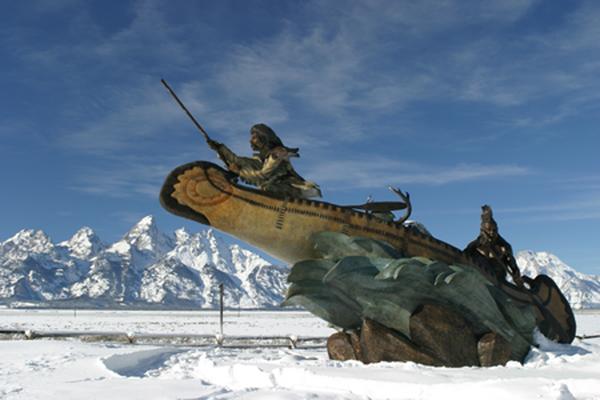
“A Leaf of A Stream” in front of the Tetons.
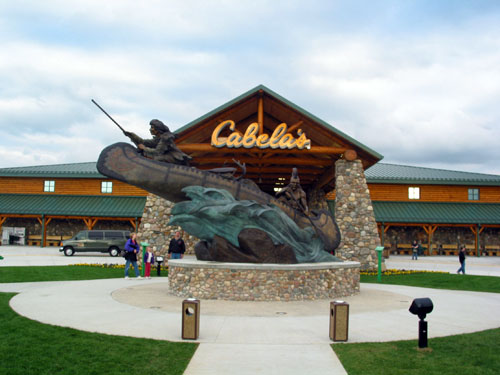
“A Leaf of A Stream” in front of Cabela’s
Extra Note: A lot of us were intrigued by the statue outside of Cabela’s at the time, it seemed out of place, extravagant, and historically inaccurate. As it turns out, the statue is actually came from one of my favorite places on earth, Jackson Hole, Wyoming. There is a interesting story behind the statue. Does it seem out of place in either of these locations?
“Since the beginning of time, men of all races and nations have sought out the far away and distant places. Legends have been born because of this ambition. Men have pushed themselves to forge oceans, climb the highest mountains and explore the bottoms of the seas. This spirit was at its highest with the settlement of the Americas and so was born the great American heroes that settled our country.
Daniel Boone was one of these great Outdoorsmen that became famous during his life, for his exploration and brave acts. Others became American legends, not realizing they would be celebrated in history books two hundred years in the future. Some of the outdoorsmen and explorers were Lewis and Clark. Their loyal young guide and hunter, John Colter, traveled with them to the Pacific and returned almost to St. Louis. Not quite back to the boundaries of civilization, he asked for permission to leave the expedition and return to the unknown Rocky Mountains. He became the first White man to explore the Yellowstone. The human life expectancy in the wilderness was six months. If you made it that long, the mountain men would say, “That boy gets the Boone and Crocket stamp.”
This is a small piece of our history, but it has engraved the outdoor spirit into many of us. It has molded us into people that are eager and thirsting for the outdoors. We always want to get into the big woods or just go see what is on the other side of the mountain. Daniel Boone was quoted for saying late in his life, “my life was like a leaf on a stream, twirling, drifting back and forth, but always going forward”. This sculpture is not of Daniel Boone, but rather a salute to all of the men that came before us and made the woods, mountains and rivers ours.” – (Vic Payne Studio)





